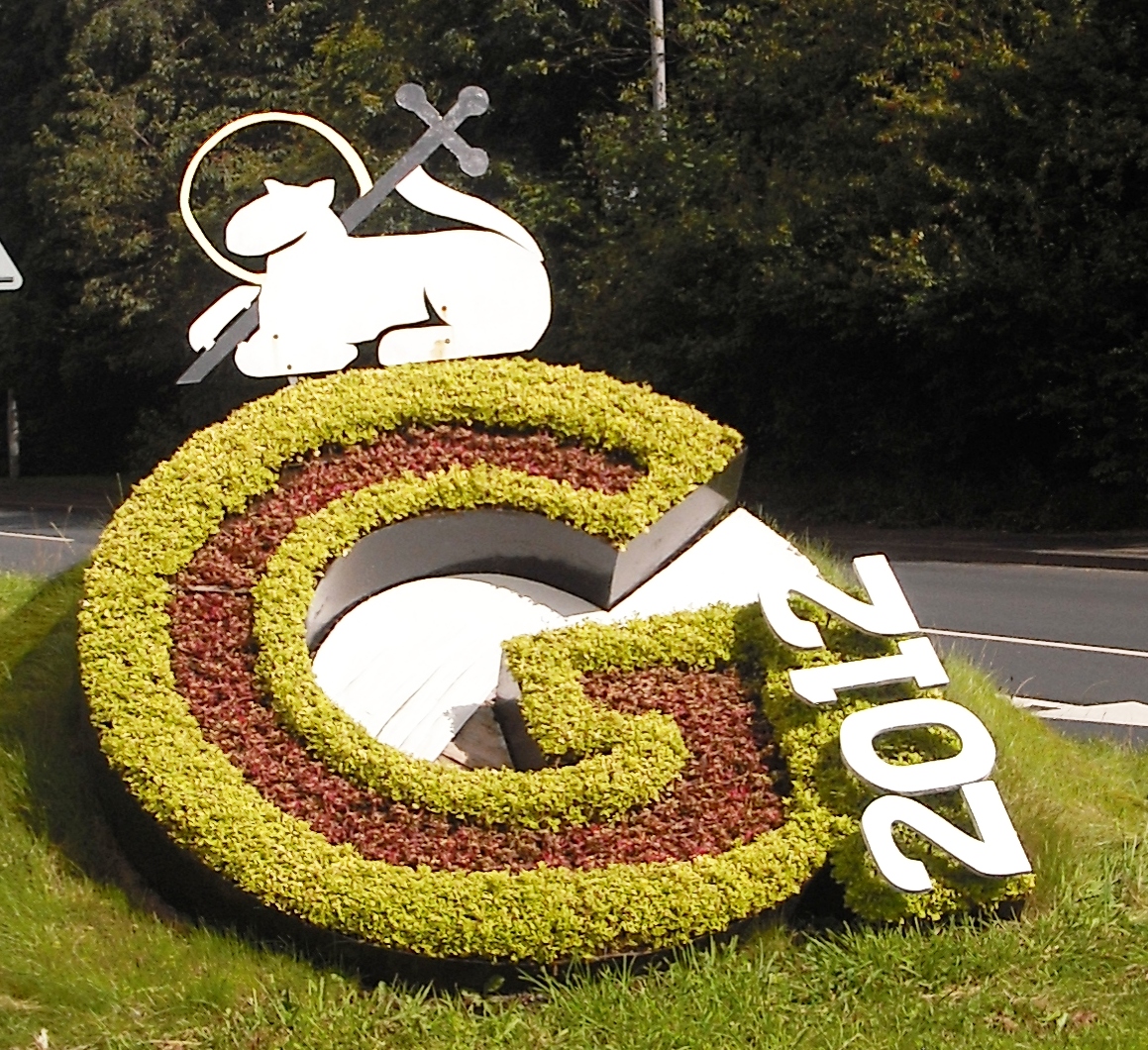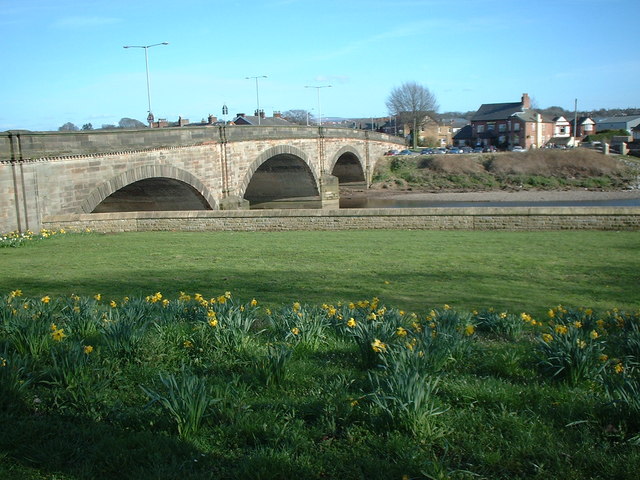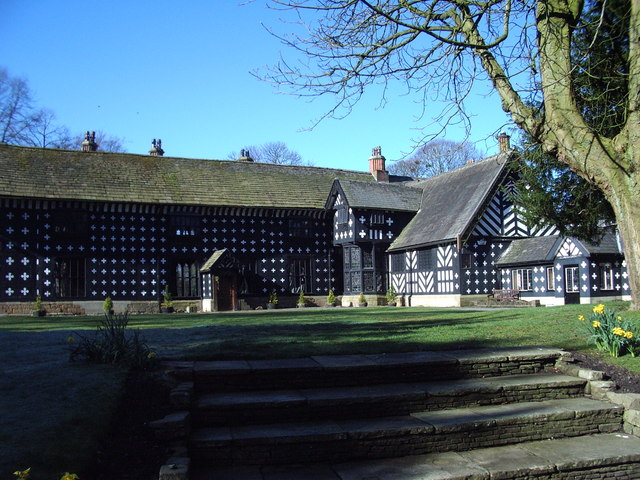|
River Ribble
The River Ribble runs through North Yorkshire and Lancashire in Northern England. It starts close to the Ribblehead Viaduct in North Yorkshire, and is one of the few that start in the Yorkshire Dales and flow westwards towards the Irish Sea (the Dee in Dentdale and the Twiss in Kingsdale being notable others). Etymology The name ''Ribble'' may be a Brittonic compound-formation. The second element is the noun ''*pol'', with connotations including "puddle, pond, upland-stream" ( Welsh ''pwll''). The first is ''rö-'', an intensive prefix, with nouns meaning "great" (Welsh ''rhy-'', Cornish re-). Ribble may once have been known as ''*Bremetonā-'', underlying the name ''Bremetenacum'', the Roman fort at Ribchester. Involved here is the Brittonic root ''*breμ–'', meaning "roaring" (cf. Welsh ''brefu''), as observed at the river-names Breamish in Northumberland, Braan in Scotland and Brefi in Wales. History Neolithic to Saxon finds from along the River Ribble during th ... [...More Info...] [...Related Items...] OR: [Wikipedia] [Google] [Baidu] |
Preston Dock
Preston Dock is a former Dock (maritime), maritime dock on the northern bank of the River Ribble, west of Preston, Lancashire, England. The Albert Edward Basin opened in 1892 and is connected to the river by a series of Lock (water navigation), locks. The dock is from the Irish Sea and provided a port for shipping until its closure in 1981. Most of the historic buildings and facilities have since been demolished and the area is now mainly commercial and residential property, along with some light industry. Following the dock's closure, a public marina opened in 1987. History Prehistory The prehistory of the lands around what is now the Preston Docks, and the use of the River Ribble as a waterway dates back many thousands of years. Excavation for the docks in the 1880s uncovered neolithic artefacts around 6,000 to 10,000 years old, some of which can be viewed in Preston's Harris Museum. Pre–Industrial Revolution Historical evidence shows that the Ribble played a role by an ... [...More Info...] [...Related Items...] OR: [Wikipedia] [Google] [Baidu] |
Preston, Lancashire
Preston () is a city on the north bank of the River Ribble in Lancashire, England. The city is the administrative centre of the county of Lancashire and the wider City of Preston, Lancashire, City of Preston local government district. Preston and its surrounding district obtained City status in the United Kingdom, city status in 2002, becoming England's 50th city in the 50th year of Elizabeth II of the United Kingdom, Queen Elizabeth II's reign. Preston had a population of 147,800 at the 2021 census, the City of Preston district 156,411 in 2023 and the Preston Built-up Area 313,322. The Preston Travel To Work Area, in 2011, had a population of 420,661, compared with 354,000 in the previous census. The south bank of the Ribble is part of the Preston urban area, although it forms the South Ribble borough that is administratively separate. Preston and its surrounding area have provided evidence of ancient Roman Britain, Roman activity, largely in the form of a Roman road that led ... [...More Info...] [...Related Items...] OR: [Wikipedia] [Google] [Baidu] |
Ribchester
Ribchester () is a village and civil parish within the Ribble Valley district of Lancashire, England. It lies on the banks of the River Ribble, northwest of Blackburn and east of Preston, Lancashire, Preston. The village has a long history with evidence of Bronze Age beginnings. It is well known as a significant Ancient Rome, Roman site being the location of a Roman cavalry fort called Bremetennacum, some parts of which have been exposed by excavation. In common with many towns and villages in East Lancashire its later history was dominated by cotton weaving; firstly in the form of hand-loom weaving and later in two mills. Neither mill still operates and the village is primarily a commuter town, dormitory village for commuters to the town of Blackburn and the cities of Preston and Manchester. The main access road into Ribchester is the B6245 road, B6245. From the north-west, this is Preston Road, which merges into Church Street, Ribchester, Church Street. From the east, it is ... [...More Info...] [...Related Items...] OR: [Wikipedia] [Google] [Baidu] |
Walton-le-Dale
Walton-le-Dale is a large village in the borough of South Ribble, in Lancashire, England. It lies on the south bank of the River Ribble, opposite the city of Preston, adjacent to Bamber Bridge. The population of the South Ribble Ward at the 2011 census was 3,792. To the west of Walton-le-Dale is the residential area of Walton Park. History Toponymy Walton is derived from ''walh'' and ''tun'' and means the farmstead or settlement of the Britons. It was recorded in the Domesday Book of 1086 as Waletune. In the 13th century it was recorded as Waleton and since about 1300 Waleton in le (la) Dale, or Walton in the valley. Early history The remains of a Roman fort at the junction of the River Darwen and River Ribble at Walton-le-Dale were discovered by accident in the mid 19th century. Roman remains found here include pottery and coins. The fort may have been the Rigodunum of Ptolemy, although most people locate it at Castleshaw. Manor Two oxgangs of land in Walton belonged ... [...More Info...] [...Related Items...] OR: [Wikipedia] [Google] [Baidu] |
Bremetennacum
Bremetennacum, (), or Bremetennacum Veteranorum, was a Roman Britain, Roman castra, fort on the site of the present day village of Ribchester in Lancashire, England (). (Misspellings in ancient geographical texts include ''Bremetonnacum'', ''Bremetenracum'' or ''Bresnetenacum''.) The site is a Scheduled Ancient Monument, Scheduled Monument. The site guarded a crossing-point of the River Ribble. The first known Roman activity was the building of a timber Castra, fort, believed to have been constructed during the campaigns of Quintus Petillius Cerialis, Petillius Cerialis around AD 72/3. This was replaced by a stone fort in the 2nd century. For most of its existence the fort was garrisoned by Sarmatians, Sarmatian Auxiliaries (Roman military), auxiliaries, first stationed in Britain by Marcus Aurelius in 175. Prior to that it is suggested that the fort was garrisoned by the ''Ala II Asturum'' from Spain, but there is some uncertainty about this. Pottery evidence indicates that the ... [...More Info...] [...Related Items...] OR: [Wikipedia] [Google] [Baidu] |
Ptolemy
Claudius Ptolemy (; , ; ; – 160s/170s AD) was a Greco-Roman mathematician, astronomer, astrologer, geographer, and music theorist who wrote about a dozen scientific treatises, three of which were important to later Byzantine science, Byzantine, Islamic science, Islamic, and Science in the Renaissance, Western European science. The first was his astronomical treatise now known as the ''Almagest'', originally entitled ' (, ', ). The second is the ''Geography (Ptolemy), Geography'', which is a thorough discussion on maps and the geographic knowledge of the Greco-Roman world. The third is the astrological treatise in which he attempted to adapt horoscopic astrology to the Aristotelian physics, Aristotelian natural philosophy of his day. This is sometimes known as the ' (, 'On the Effects') but more commonly known as the ' (from the Koine Greek meaning 'four books'; ). The Catholic Church promoted his work, which included the only mathematically sound geocentric model of the Sola ... [...More Info...] [...Related Items...] OR: [Wikipedia] [Google] [Baidu] |
Samlesbury
Samlesbury ( ''or locally'' ) is a village and civil parish in South Ribble, Lancashire, England. Samlesbury Hall, a historic house, is in the village, as is Samlesbury Aerodrome and a large modern brewery owned by Anheuser-Busch InBev. The population at the United Kingdom Census 2011, 2011 census was 1,206. History The village's name is derived from the Old English ''sceamol'', meaning ledge and ''burh'' meaning fortification, hence literally "ledge fortification". It may also be that the name at least partly derives from the Roman Empire, Roman name for the River Ribble and its eponymous Celtic mythology, Celtic deity, Belisama. In the Late Middle Ages a fortified house stood near the river, the home of the Denyas family. It was destroyed by the Scots during The Great Raid of 1322. An heiress, Alicia Denyas, married Gilbert de Southworth, the builder of Samlesbury Hall. The parish was part of Preston Rural District throughout its existence from 1894 to 1974. In 1974 the pari ... [...More Info...] [...Related Items...] OR: [Wikipedia] [Google] [Baidu] |
Belisama
Belisama (Gaulish ''Belesama''; epigraphically ) is a Celtic goddess. She was identified by Roman commentators with Minerva by ''interpretatio romana''. Name The Gaulish theonym ''Belesama'' has been traditionally interpreted as meaning 'the very bright', stemming from the Indo-European root ''*bʰelH-'' ('white, shining'; cf. Lith. ''báltas'' 'white', Greek φαλόσ ''phalós'' 'white', Arm. ''bal'' 'pallor', goth. ''bala'' 'grey') attached to the superlative suffix *-''isamā''. As for '' Belenos'', however, this theory has come under increasing criticism in contemporary scholarship. Xavier Delamarre notes that the proposed cognates stemming from ''*bʰelH-'' do not seem to connote 'shining', but rather 'white, grey, pale', and proposes to derive the name from the Gaulish root ''belo''- ('strong, powerful'), rendering ''Belesama'' as 'the very strong' (cf. Sanskrit ''baliṣṭhaḥ'' 'the strongest'). Alternatively, Peter Schrijver has conjectured a connection with the ... [...More Info...] [...Related Items...] OR: [Wikipedia] [Google] [Baidu] |
Roman Empire
The Roman Empire ruled the Mediterranean and much of Europe, Western Asia and North Africa. The Roman people, Romans conquered most of this during the Roman Republic, Republic, and it was ruled by emperors following Octavian's assumption of effective sole rule in 27 BC. The Western Roman Empire, western empire collapsed in 476 AD, but the Byzantine Empire, eastern empire lasted until the fall of Constantinople in 1453. By 100 BC, the city of Rome had expanded its rule from the Italian peninsula to most of the Mediterranean Sea, Mediterranean and beyond. However, it was severely destabilised by List of Roman civil wars and revolts, civil wars and political conflicts, which culminated in the Wars of Augustus, victory of Octavian over Mark Antony and Cleopatra at the Battle of Actium in 31 BC, and the subsequent conquest of the Ptolemaic Kingdom in Egypt. In 27 BC, the Roman Senate granted Octavian overarching military power () and the new title of ''Augustus (title), Augustus'' ... [...More Info...] [...Related Items...] OR: [Wikipedia] [Google] [Baidu] |
Saxon Britain
Anglo-Saxon England or early medieval England covers the period from the end of Roman imperial rule in Britain in the 5th century until the Norman Conquest in 1066. Compared to modern England, the territory of the Anglo-Saxons stretched north to present day Lothian in southeastern Scotland, whereas it did not initially include western areas of England such as Cornwall, Herefordshire, Shropshire, Cheshire, Lancashire, and Cumbria. The 5th and 6th centuries involved the collapse of economic networks and political structures and also saw a radical change to a new Anglo-Saxon language and culture. This change was driven by movements of peoples as well as changes which were happening in both northern Gaul and the North Sea coast of what is now Germany and the Netherlands. The Anglo-Saxon language, also known as Old English, was a close relative of languages spoken in the latter regions, and genetic studies have confirmed that there was significant migration to Britain from there be ... [...More Info...] [...Related Items...] OR: [Wikipedia] [Google] [Baidu] |
Neolithic Britain
The Neolithic period in the British Isles lasted from 4100 to 2,500 BC. Constituting the final stage of the Stone Age in the region, it was preceded by the Mesolithic and followed by the Bronze Age. During the Mesolithic period, the inhabitants of the British Isles had been hunter-gatherers. Around 4000 BC, migrants began arriving from Central Europe. These migrants brought new ideas, leading to a radical transformation of society and landscape that has been called the Neolithic Revolution. The Neolithic period in the British Isles was characterised by the adoption of agriculture and sedentary living. To make room for the new farmland, the early agricultural communities undertook mass deforestation across the islands, which dramatically and permanently transformed the landscape. At the same time, new types of stone tools requiring more skill began to be produced, and new technologies included polishing. Although the earliest indisputably-acknowledged languages spoken in the ... [...More Info...] [...Related Items...] OR: [Wikipedia] [Google] [Baidu] |
Llanddewi Brefi
Llanddewi Brefi () is a village, parish and Community (Wales), community of approximately 500 people in Ceredigion, Wales. The village is notable for the famous Synod of Brefi held here in the sixth century. A number of miraculous events are said to have occurred during the synod, most notably by Saint David , patron saint of Wales. Today, it is one of the largest parishes in Wales and lies north-east of Lampeter between Tregaron and Llanfair Clydogau. It is in the electoral ward of Llangeitho. Etymology The village was anciently named ''Brefi'', and the Latin name ''Bremia'' appears in the Ravenna Cosmography as a station on the route through Wales. The station and route are thought to refer to the Bremia (fort), Bremia Roman fort and the Sarn Helen respectively. This name was recorded by the antiquarian John Leland (antiquary), John Leland as ''Brevy'', which he states is also the name of the small river that runs through the village and into the Teifi. As such it is believed ... [...More Info...] [...Related Items...] OR: [Wikipedia] [Google] [Baidu] |









